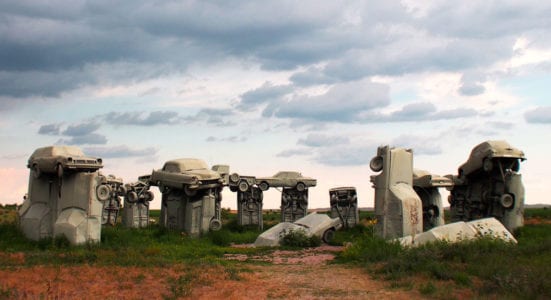Alternative forms of democratic ownership and governance: Exploring the structural and cultural dimensions
In this blog, Ian Vickers is introducing a new paper that examines the implementation of governance arrangements to extend ownership and control to employees and community stakeholders in social enterprises. The research finds that the realisation of democratic ideals involves a gradual and often challenging process. Suitable legal forms, inclusive organisational cultures, visionary leadership and concrete actions that are in line with the organisation’s social mission are key to success.

At a time of reviving interest in the role and importance of democracy within organisations that deliver crucial services to communities, we need to better understand the challenges involved when introducing alternatives to private investor-owned and public sector organisations. Public service social enterprises—or ‘mutuals’—can be seen as experimental test-beds for organisational forms which seek to harness the knowledge and motivations of their employees and communities to address health, wellbeing and social inclusivity challenges. A recent paper involving CUSP researchers at Middlesex University examines the actual experiences of thirty such newly created mutuals and shows the importance of both the cultural-psychological and legal-formal dimensions of ownership and empowerment.
The mutuals that were examined as part of our study took a variety of social enterprise forms designed to restrict the distribution of profit to shareholders and to favour ownership and control on behalf of employees and the communities they serve. Ownership is commonly understood as a formal/legal property and can be direct, that is, through shareholding or membership, or indirect with ownership being exercised through a trust or charitable form that is accountable to employees and service users/clients. The choice facing organisations can initially be represented in terms of two basic models:
- Stewardship model: a board of governors is selected to support the CEO in managing the organisation’s assets for greater return on behalf of stakeholders;
- Democratic (multi-)stakeholder model: direct involvement of employees, community and other stakeholders in collaborative governance.
In practice, social enterprises and other voluntary sector organisations tend to adopt a combination of both the stewardship and democratic stakeholder models. Their final choice usually depends on the circumstances and priorities of the respective organisation and its leaders. However, the legal form alone does not determine the nature of democratic ownership and governance. Further choices arise from the need to define the scope of ownership—exactly who are the newly enfranchised owners or members? This could be the organisation’s trustees, employees, service users, or perhaps a local authority, or some combination of these groups. There is also a need to establish the mechanisms of governance, which can include employee and user representation on the board of governors or trustees, or a separate representative body that is closely linked to and feeds back to the board.
Our paper also shows how ownership is not just a legal-formal property but also has a cultural-psychological dimension. Crucial here are factors relating to employees’ sense of belonging and their ‘buy-in’ to the organisational culture, and the extent to which they have agency and ‘voice’ that, most importantly, is heard. Visionary leadership and changes to organisational practices and culture play a vital role here. This is particularly so amongst mutuals that have been created through a process of ‘spinning out’ from the public sector and where there is a need to define the new identity and ways of working and embed these in the culture of the new organisation.
There is also a need to understand how this cultural dimension interacts with and enables the formal-structural dimension of governance: our study reveals the diversity of approaches and outcomes in public service mutuals. This complexity can be simplified in terms of four main ‘ideal type’ models of democratic enfranchisement, which may also be stages in a longer-term journey towards mutualism:
Stewardship 1: without legal or cultural-psychological ownership
In such cases, directors and board members act as stewards for the beneficiaries and employees who are not involved in governance and decision-making, or only to a limited extent. This rather traditional ‘top down’ model is commonly found in the wider non-profit/charity sector and is less typical of public service mutuals and other social enterprises.
Stewardship 2: with strong cultural-psychological ownership
Although still lacking formal-legal ownership, employees (and sometimes users/clients) in this category have a strong sense of ‘psychological ownership and belonging’ that is also linked to their involvement in decision making. This includes an enhanced ability to respond to user community needs through co-production and innovation compared to when services were delivered from within the public sector.
Democratic stakeholder 1: legal-formal ownership but lacking cultural-psychological ownership
Some organisations were found to have a strong legal-formal framework for (multi-) stakeholder ownership but with a weak (or still developing) culture of participation and engagement. This may reflect a number of factors, including the relative newness of many of the mutuals studied. Although the legal form and other mechanisms adopted provide for staff (and sometimes service user) representation and involvement in decision making, these opportunities tend to be under-realised and there may be problems related to stakeholders’ lack of motivation or confidence in their ability to participate in organisational governance and so fully exert their (legal) ownership rights.
Democratic stakeholder 2: with legal-formal and cultural-psychological ownership
This category exemplifies the mutual ‘ideal’ by effectively combining the adoption of appropriate legal forms and related mechanisms with a strong approach to promoting and embedding inclusive ownership and collaborative governance as core to the organisation’s identity and culture, as well as its underlying driving force. Our analysis found that only five (out of 30) organisations showed evidence of such an advanced or high level of adoption of formal mechanisms and that the mutualisation process in these cases had been strongly supported by the cultural-psychological dimension of empowerment and ownership.
Putting mutualism and democratic governance into practice can be a slow and sometimes difficult process. It often involves debate and argument and a rethinking of traditional models, but this may also be necessary to build understanding and learning between the various participants and their viewpoints: employees, users, managers, directors and governors/trustees. There is a need for suitable legal forms and concrete actions that are in line with the organisation’s social mission, but also for visionary leadership that develops trust between stakeholders and enables their capacity and willingness to collaborate. It is neither ‘structure’ nor ‘culture’ that drives democratic governance, but a creative interplay of the two that matters.
We currently continue to explore the role of democracy within public service mutuals and in other types of social/community business through further empirical research. This research will look at a wider mix of service areas and aims to further strengthen our understanding of the role and future potential of democratic ownership and collaborative governance in delivering sustainable prosperity.
Sepulveda, L., Lyon, F., Vickers, I. (2020) Implementing Democratic Governance and Ownership: The Interplay of Structure and Culture in Public Service Social Enterprises. VOLUNTAS: International Journal of Voluntary and Nonprofit Organizations.



